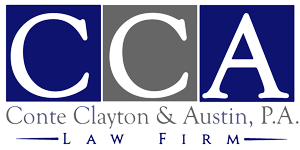What is a Triple Net Lease?
In commercial leasing, a gross lease and the triple net lease (sometimes called a “net” or “NNN” lease) represent opposite ends of the spectrum and each carry significant responsibilities and benefits for both the landlord and the tenant. There is also an array of arrangements that fall somewhere in-between a pure gross and the pure net lease. It is critical to review any contract before you sign it. A commercial lease is no exception and more than a few unsuspecting tenants who carelessly neglected to study their leases found themselves responsible for monthly payments to their landlord over and above the base rent that was negotiated. For the purpose of this article, we will focus on what Triple Net means.
In spite of how common triple net leases are, they are often misunderstood by both landlords and tenants. The term triple net references the fact that the NNN lease results in the landlord retaining the full amount of base rental payments without reduction for operating expenses associated with the property. “Triple” refers to the three fees included in the operating expenses: real estate taxes, insurance and maintenance (sometimes called “CAM”, however CAM refers to a specific type of maintenance cost). On the other hand, in the context of a gross lease, the rent payment is “gross” to the landlord, who then pays property related expenses from the gross rental payment. Keep in mind that leases are often referenced as “triple net” when they are not. The devil is in the details, and those details are often buried in the single spaced pages of your lease.
A triple net lease generally requires the tenant to pay the landlord base rent, along with the tenant’s proportionate share of actual or projected operating expenses associated with the property. The operating expenses of the property include things like landscaping, snow removal, insurance, maintenance expenses and real estate taxes. In other words, the tenant agrees to take responsibility for all or an agreed upon portion of the overall operating expenses of the property. In multi-tenant properties, the tenant’s share is referred to as the “proportionate share” and is commonly calculated based upon the square footage of the tenant’s leasehold space, divided by the total amount of leasable square footage at the property.
Triple net leases can benefit both the landlord and the tenant. Landlords like the triple net structure because it reduces the investment risk associated with property ownership by passing off the variable costs of maintenance, taxes and other expenses to the tenants. Tenants benefit from triple net leases because it incentivizes landlords to keep their commercial properties well maintained, updated and fresh.
On the other hand, tenants must be weary of landlords who abuse the triple net structure by including outside or inflated expenses into the property’s operating expenses. Therefore, it is prudent for tenants to negotiate a provision that allows them to review or audit the operating expenses of the property periodically.
If you have questions about your commercial lease or need assistance in preparing, negotiating a commercial lease, please don’t hesitate to call the attorneys at Conte Clayton & Austin, P.A. today.




